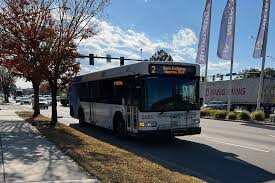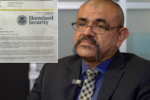In a significant move toward improving public transportation and reducing traffic congestion in Southeastern Virginia, Hampton Roads Transit (HRT) has announced an ambitious expansion of its light rail services. The project, unveiled at a press conference on Tuesday, aims to connect more neighborhoods, reduce commute times, and enhance accessibility for residents across the region.
The expansion plan, which has been in the works for several years, will extend the current light rail system, known as “The Tide,” to new destinations, including densely populated residential areas and major business districts. This initiative comes in response to increasing public demand for more efficient, environmentally friendly, and affordable transportation options.
Details of the Expansion
According to HRT, the expansion will involve the addition of 12 miles of new track, 10 new stations, and the acquisition of advanced light rail vehicles. The extended route will connect Norfolk to Virginia Beach’s Town Center, a long-awaited link that residents and commuters have advocated for over the years. Additionally, the expansion will integrate better connectivity to the Norfolk Naval Station, the world’s largest naval base.
The Tide currently operates a 7.4-mile route between the Eastern Virginia Medical Center and Newtown Road, serving thousands of daily commuters. The planned extension will nearly double its reach, making it one of the most comprehensive public transit initiatives in Virginia in recent years. Hampton Roads Transit’s official website offers further details about the current and future operations of “The Tide.”
Funding and Government Support
The project is estimated to cost $800 million and will be funded through a combination of federal, state, and local sources. The Federal Transit Administration (FTA) has committed significant funding through its Capital Investment Grant program, while the Virginia Department of Rail and Public Transportation has pledged additional financial support to make the project a reality. For information about federal transportation grants, visit the Federal Transit Administration’s official page.
In a statement, Virginia Governor Glenn Youngkin emphasized the importance of investing in public transportation to bolster economic development and reduce carbon emissions. “This expansion is a monumental step forward for Hampton Roads and aligns with our goals of creating sustainable and accessible transportation options for all Virginians,” Youngkin said.
Community Benefits
The light rail expansion is expected to bring numerous benefits to the Hampton Roads region. Firstly, it will provide a reliable alternative to driving on congested highways like I-64 and I-264, potentially reducing traffic-related delays and accidents. Additionally, the new stations will offer enhanced access to educational institutions, shopping centers, and recreational areas, making the system more appealing to families and students.
Local businesses are also likely to benefit from the increased foot traffic around the new stations. Virginia Beach Mayor Bobby Dyer highlighted how the project could serve as a catalyst for economic growth. “Transit-oriented development around light rail stations can boost local businesses, create jobs, and attract new investments to our city,” Dyer said.
Moreover, the environmental impact of expanding light rail services cannot be overstated. By offering an efficient alternative to single-occupancy vehicles, the project is expected to significantly reduce greenhouse gas emissions, aligning with Virginia’s clean energy goals. More information on the state’s sustainability initiatives can be found on the Virginia Energy website.
Challenges Ahead
While the project has received widespread support, challenges remain. Critics have raised concerns about potential disruptions during construction and the risk of cost overruns. HRT officials, however, have assured the public that the project will be managed efficiently, with a focus on minimizing inconvenience to residents and businesses along the proposed route.
The agency is also working to address equity concerns by ensuring the new stations serve underserved communities. According to William Harrell, CEO of HRT, “We are committed to making this expansion equitable and accessible to everyone, regardless of socioeconomic status.”
Public Engagement and Feedback
HRT has emphasized the importance of community input in shaping the expansion. Public hearings and feedback sessions will be held throughout 2025 to address residents’ concerns and gather suggestions on station placement and design. Residents are encouraged to participate in the planning process to ensure the project meets the region’s diverse needs. Details about upcoming hearings can be found on the Hampton Roads Transit public notices page.
A Vision for the Future
The light rail expansion marks a bold step forward for Hampton Roads Transit and the region as a whole. As urban centers continue to grow, reliable and sustainable public transportation systems like The Tide will play a pivotal role in shaping the future of cities.
HRT’s expansion plan has the potential to transform the way people live and commute in Southeastern Virginia, making it a model for other regions facing similar transportation challenges. With strong public support, strategic planning, and government backing, Hampton Roads is well on its way to becoming a more connected and environmentally conscious community.
For ongoing updates about the project, visit the Hampton Roads Transit project updates page.
Disclaimer – Our team has carefully fact-checked this article to make sure it’s accurate and free from any misinformation. We’re dedicated to keeping our content honest and reliable for our readers.








